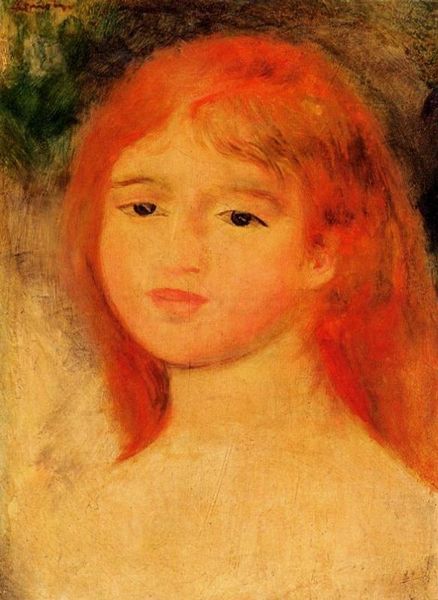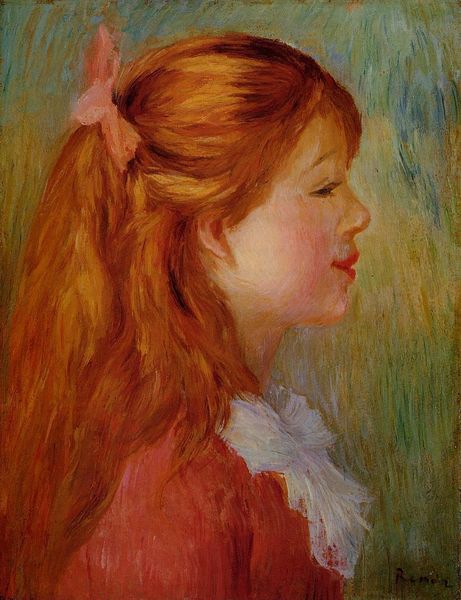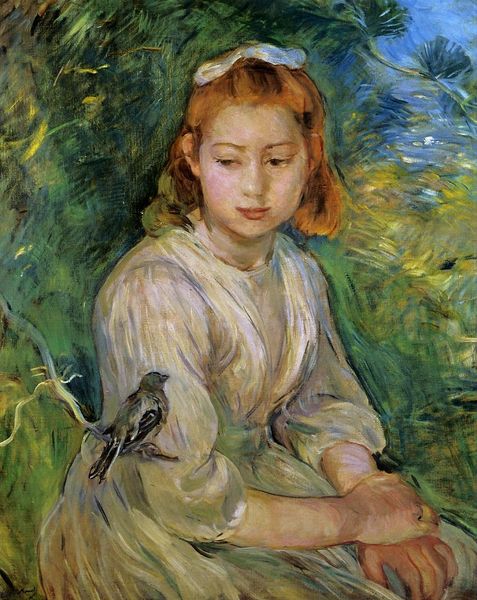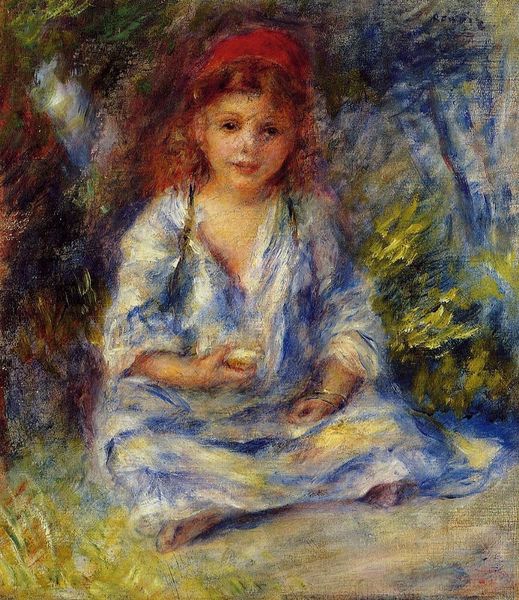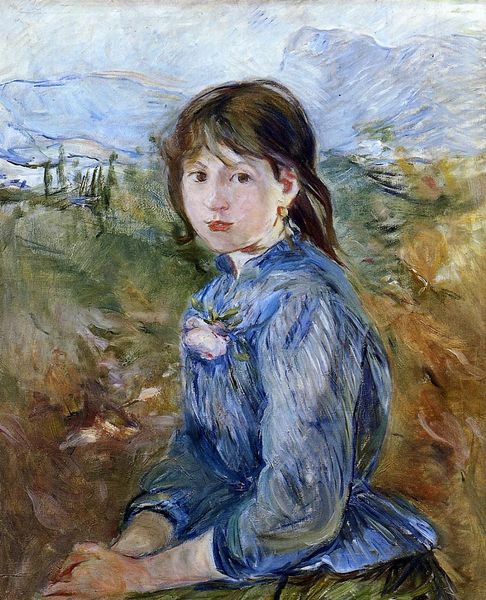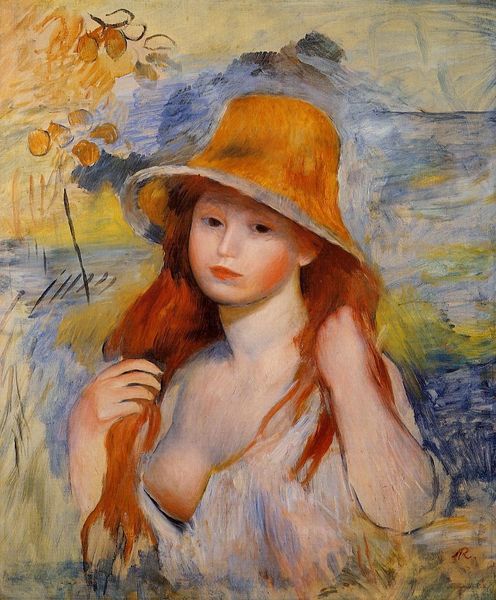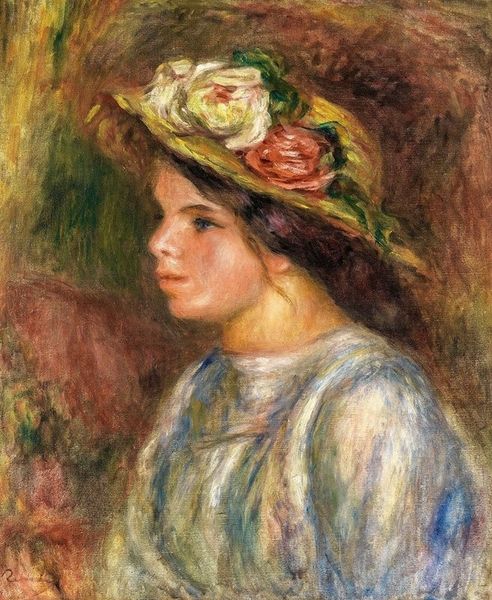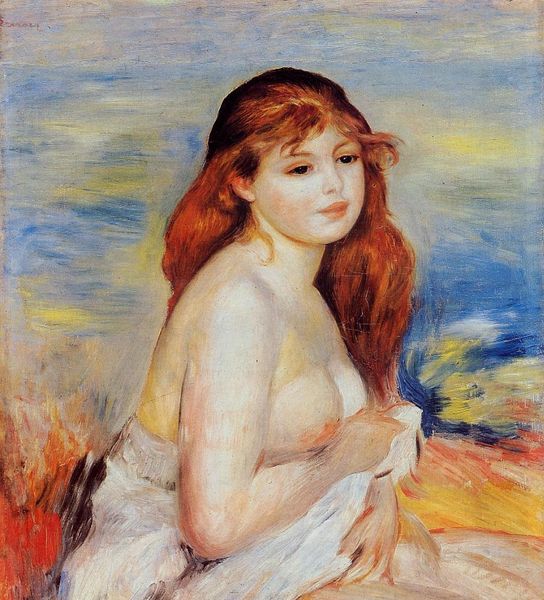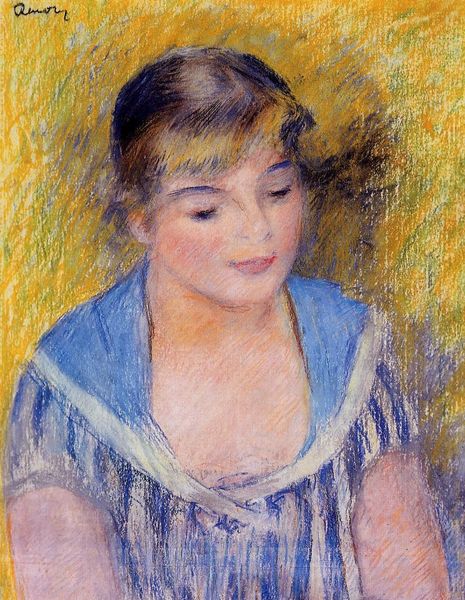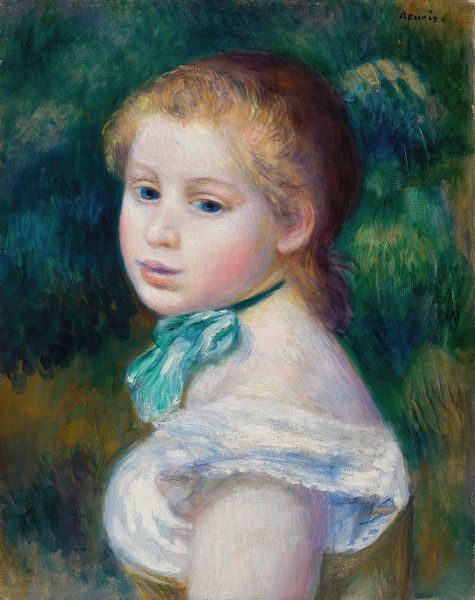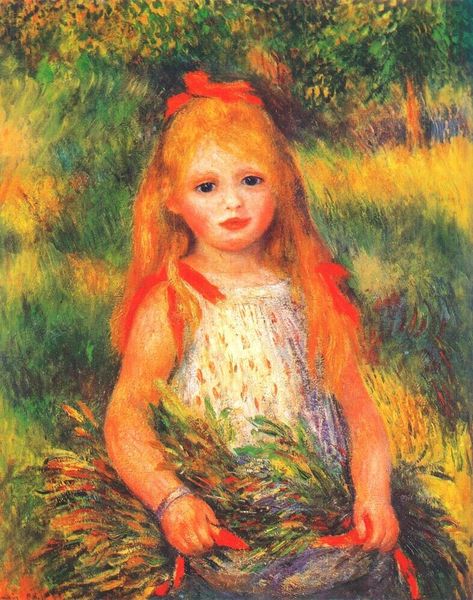
Dimensions: 42.2 x 47.6 cm
Copyright: Public domain
Curator: We are looking at Berthe Morisot’s oil painting, "Little Girl at Mesnil," from 1892. I'm struck immediately by its almost dissolving form—a vibrant dance of color and light. Curator: It feels deeply intimate, doesn’t it? Almost voyeuristic, peering into a child’s private world. I wonder what life was like for her, growing up in that era. Curator: Notice how Morisot uses rapid brushstrokes, blurring the distinction between the subject and her surroundings. This technique enhances the immediacy, inviting the viewer to connect with the painting's ephemeral mood rather than hyper-realist detail. Curator: Yes, but the soft focus on this girl, set within this hazy context, also raises questions. As a woman artist, Morisot was largely confined to domestic subjects. Was painting women and girls a matter of circumstance, choice, or even resistance? Curator: Perhaps it's both constraint and opportunity. The soft palette, primarily greens and earthy pinks, is harmonious, lending the work an emotional depth, what I think of as pure color relationship and form, but isn’t it also a deliberate construction? The girl’s positioning, the open brushstrokes all compose that sense of feeling you picked up on so strongly. Curator: And consider that Morisot painted during a time when female artists faced enormous obstacles. Displaying girls, women, and their daily lives wasn’t only an observation; for her it was a kind of defiance, or reclaiming, where traditionally women in art had very little agency or even visibility. This work challenges the established artistic norms and expectations, wouldn’t you say? Curator: There’s certainly the artist’s deftness of hand and deliberate use of Impressionist techniques. Looking closely, the paint application and feathery brushstrokes bring forth dynamism, and the visible sketch underneath provides an intellectual entry into Morisot’s artistry. Curator: Precisely. And situating the artwork within Morisot's broader feminist vision is key here. The piece pushes against historical art traditions by showcasing the lives and experiences of young women with a gentle focus, without idealization or heavy allegory, right? Curator: Yes, now when you mentioned it, I perceive her subtle narrative with fresh eyes—a poignant narrative indeed. Curator: Seeing the artist and her sitter in this light changes everything.
Comments
No comments
Be the first to comment and join the conversation on the ultimate creative platform.
